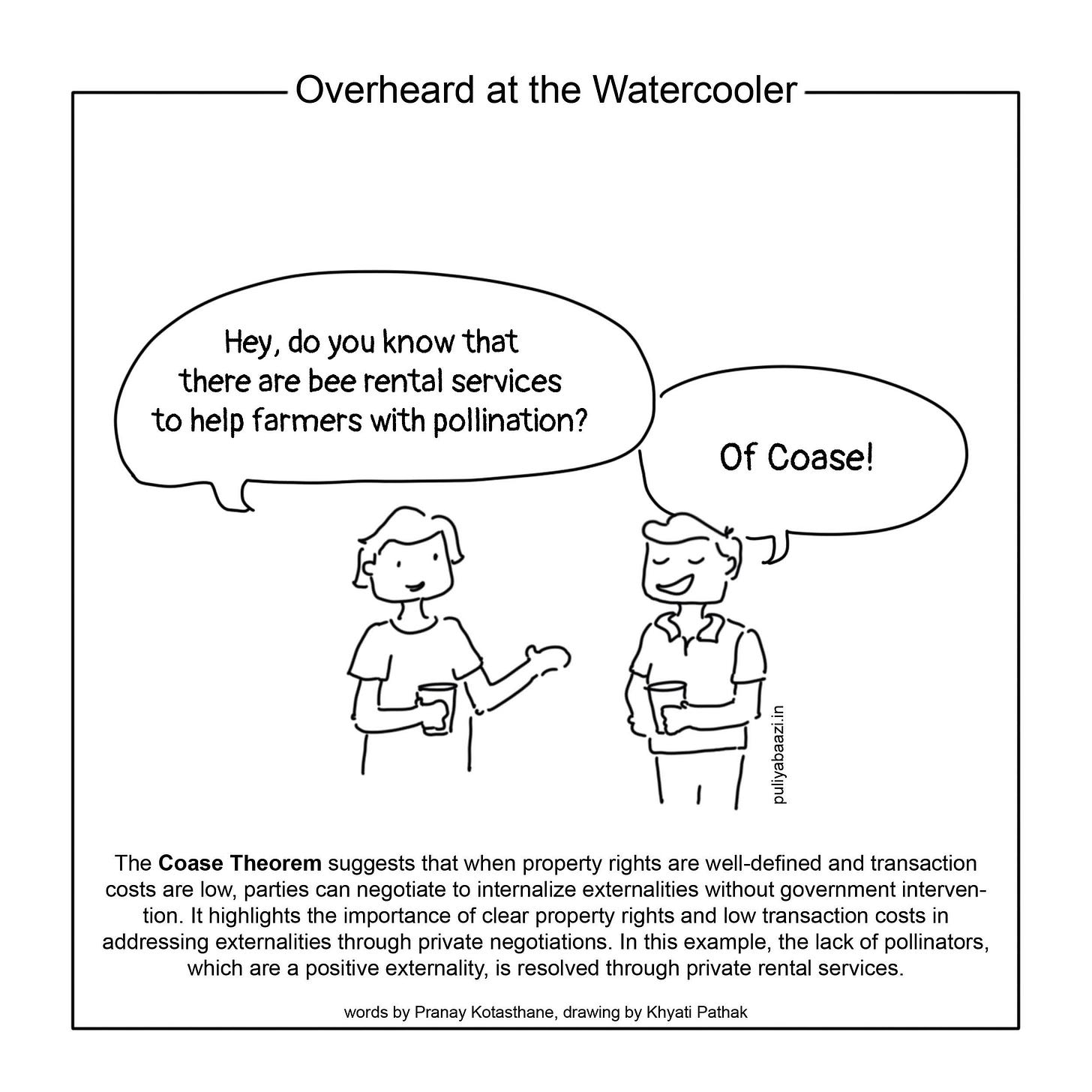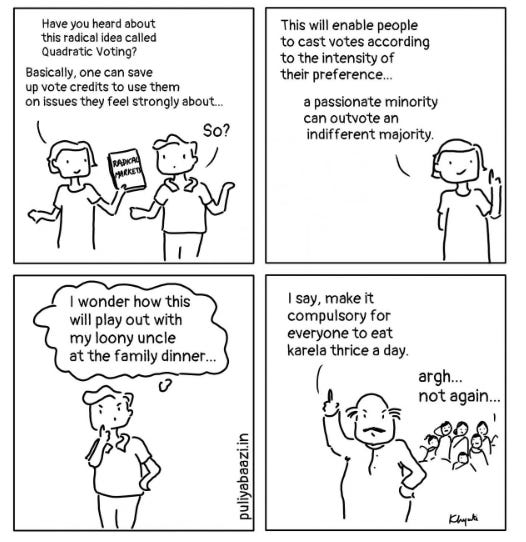Tippani
just some scribbles and additional notes...
Chai me murmura
Preference Falsification is the act of misrepresenting one's preferences under perceived public pressure. Have you experienced this kind of pressure?
The term was coined by economist Timur Kuran, and explained in his book 'Private Truths, Public Lies'. In simple words, people do not express their true opinion if they fear that the dominant public opinion is different from their true opinion, and if they feel that there will be some cost to revealing their true opinion. This leads to a distortion of true public opinion, leading to widely disliked practice or policy to carry on for longer. It may also led to minor events causing a sudden change, if the underlying support to the practice or policy was largely contrived.
We were having a discussion about this on OpenTakshashila and our colleague Satya gave an example of those who like pineapple on pizza. We figured that example may not be understood by most Indians. So we thought, "hmm... what can be the Indian equivalent of pineapple on pizza?". I guess murmura in chai would fit the bill? What do you think?
Of Coase!
The Coase Theorem, named after Nobel laureate Ronald Coase, states that when property rights are well-defined and cost of transaction are low, parties can negotiate to internalize externality problems. It is not a theorem in a mathematical sense, but highlights the importance of clear property rights and low transaction costs in negotiating externalities.
Earlier, another Nobel winner, James Meade, had argued that markets will under-produce honey as bees have a positive externality that will benefit beyond the bee-keeper's farm, but no farmer would be ready to pay for it, and hence markets will under produce pollination services and honey. However, later another economist noted that bee-keeping was indeed a thriving industry in the US where beekeepers take their bees across the country to provide pollination to farmers who are willing to pay them. The property rights in this transaction are well-defined—the beekeeper keeps the honey, the farmer benefits from better yields on his farm. The cost of this transaction is also low. The bees don't fly away too far into other farms, so farmers are willing to pay for these services. Hence, the externality is contained and can be negotiated through this transaction.
Other externality problems, such as pollution are harder to negotiate because there is no clarity on who is getting affected and how much, and hence, it is difficult to account for the cost of that externality into the transaction.
Ye Quadratic Voting Kya Hota Hai?
Quadratic Voting: An innovative voting mechanism proposed in the book "Radical Markets". This mechanism allows for spending vote credits in a quadratic fashion. To cast 2 votes, one must spend 4 credits. To cast 3 votes, one must spend 9 credits and so on. This allows voters to vote based on the intensity with which they feel about a particular issue.
Our take: Politics is the art of persuasion. The one person-one vote system requires that people negotiate and persuade others and reach a consensus to get things done. A quadratic voting system would reduce the incentive to persuade and enable more extreme positions to bulldoze middle ground positions.
Listen here for the full episode where we review other such radical ideas from the book "Radical Markets".




